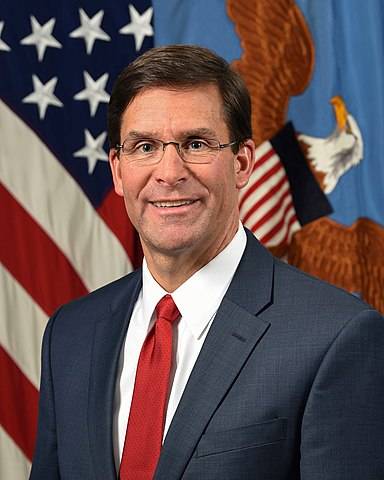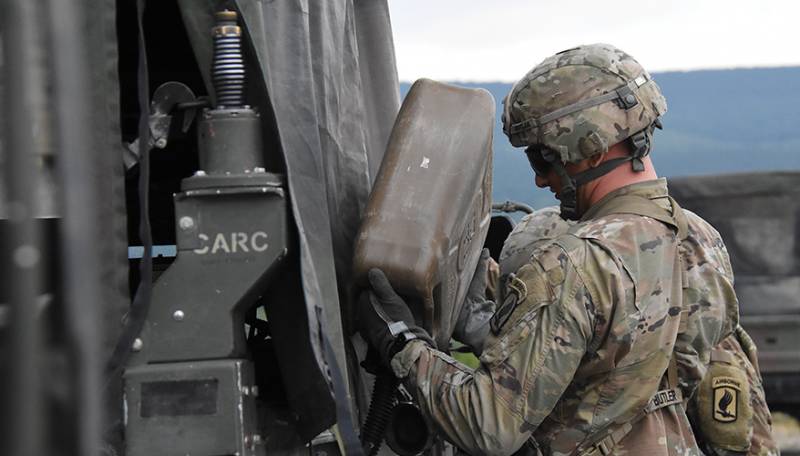Mark Esper Offers Solutions to U.S. Army Shortfalls

In recent years, the US military has faced a shortage of recruits. The flow of volunteers wishing to enter the army is constantly declining, and not all potential military personnel meet the requirements. Various measures of one kind or another are proposed. In particular, the other day, former US Secretary of Defense (2019-2020) Mark T. Esper proposed his options for solving such a problem.
Danger for America
The former minister revealed his views on the problem of recruitment in the army in the article "Long, slow decline of the US military's all-volunteer force puts America in danger" ("A long and slow decline of voluntary recruitment threatens America"). The article was published on September 19 by Fox News.
The former minister notes that the all-volunteer principle of recruiting into the army (All-Volunteer Force or AVF) is "slowly dying." In the past, half a century after the abolition of compulsory conscription, this principle ensured the building of powerful armed forces. The professional army has repeatedly shown its advantages in real conflicts.
However, now AFV is not up to the task. Despite all efforts, plans for recruits are not being fulfilled. In particular, the ground forces will receive less than 15 men this year, and a new worsening of the situation is expected next year. M. Esper recalls the possible reasons for this. Thus, experts believe that potential recruits are deterred by the complexity of the service, insufficient salary and social package, the ongoing pandemic and other factors.

The former minister believes that some of these negative factors can be corrected or overcome. However, in this case, several characteristic problems that threaten AFV will remain.
Potential recruits
The former minister recalls a serious reduction in the number of potential recruits. Fewer Americans between the ages of 17 and 24 are able or willing to enter the service. This process has been observed over the past few years and leads to new negative results. There are no prerequisites for correcting the situation yet.
To demonstrate the negative trends, M. Esper cited statistics for 2018, when he served as Minister of the Army. At that time, there were about 34 million people in the United States. at the age of 17-24 years. Of these, 71%, for various reasons, did not meet the requirements for admission to the army. They could not be recruited due to obesity and other diseases, incl. mental, due to drug use or a criminal record.
To date, the proportion of healthy and fit young people in this age group has fallen to 23%. Another 10% could serve, but do not meet the educational requirements. Finally, only 9% of potential recruits show a desire to join the army - a total of approx. 320 thousand people M. Esper believes that for a country with a population of more than 330 million people. this is extremely small.
The former defense minister names possible prerequisites for the formation and development of a negative situation. In particular, he notes that most of the population is simply unfamiliar with the army, its service and mission. So, at the time of the abolition of conscription in 1973, most families had people with service experience. They could tell young people about the importance of the army and the need to enter the service.

In the future, the armed forces were reduced; the number of bases in the United States decreased. As a result, the proportion of the population with indirect ties to the army has also declined, and a “knowledge gap” or “identity gap” has also emerged. Because of this, many young people do not know anything about military service and do not consider entering it.
In this context, there is another interesting trend. 80% of current military personnel have relatives who served or are serving in the armed forces. M. Esper calls it a formed caste.
Action plan
The former minister notes that the Pentagon is doing everything possible to correct the current situation. However, the scale and scope of the observed problems are beyond its capabilities and competence. In this regard, it is necessary to involve other departments and take action at the highest level.
First of all, the White House and Congress should get involved in the work. They could set up a bipartisan commission to look into the issues and come up with a plan of action. A similar commission was assembled in 1969 by President Richard Nixon to move from conscription to voluntary service. The new commission will have to save the AFV.

Acting outside of the Pentagon's purview, the commission should pay attention to the health of young people. It is necessary to improve the physical and psychological condition of potential military personnel, as well as to review the requirements for recruits. At the national level, the JROTC "Junior Officer Reserve" program should be expanded, as well as the interaction of military personnel with the civilian population.
Agitation issues should receive a lot of attention. It is necessary to promote the correct views on military service. Federal leadership and state administrations should be involved in these processes. Cultural and sports figures, popular among young people, could also play their role.
The Pentagon, in turn, must maintain all existing standards. Reducing the requirements for recruits, reducing the number of units and formations, or other measures are unacceptable. In this context, M. Esper recalls that the goal is not to optimize processes, but to build a strong army.
The former minister notes that the situation in the world is changing, and threats to US security are growing. They need to be responded to, incl. by correcting the situation with recruits. At the same time, the proposed and implemented solutions in this area will give results only in a few years. Accordingly, the US leadership should hurry up and act now.
Problems and solutions
The problems of the US military with the search for recruits have long been well known. The trends observed now were formed and gained momentum a few years ago. In addition, throughout this time, such problems have been discussed at various levels, become a topic for publications in the media, and so on.

Now former Secretary of Defense Mark Esper has raised an important topic. In 2019-2020, when he led the Pentagon, the problem of shortfall manifested itself in full, and the situation constantly worsened. The ministry tried to take action and counter these trends, but all its actions proved to be futile - and in 2020-22. the situation got even worse. Now the former minister gives advice to the current leadership of the country and the military department.
How useful the proposed measures might be is not known. In addition, uncomfortable questions may arise as to why the Pentagon did not do all this and did not try to involve other agencies in 2019-20. However, the need for certain measures or the importance of interaction between different structures is obvious.
Of greatest interest in the article by M. Esper and in other publications on this topic are the theses about the origin of the current shortage of recruits. Everyone recognizes that this problem did not appear on its own, but was the result of a combination and interaction of several factors of a social and other nature. Some of these factors are to some extent related to the army, while others are related to society and the country as a whole.
The shortage of military personnel is in fact only a symptom that accompanies the more serious problems of society. And in order to correct the situation with recruits, it is necessary first of all to resolve precisely these issues, which require serious joint efforts by a significant number of structures and departments. Various actions are needed in the economy, in the social sphere, in the field of moral climate, and so on.
Whether the Pentagon and other departments will be able to solve the existing problems is a big question. However, it is obvious that the lack of real measures and success in this area will once again hit both the society and the defense capability. The United States still has a significant military potential, but testing it for strength with internal problems and exposing it to various risks would not be the best idea.
Information